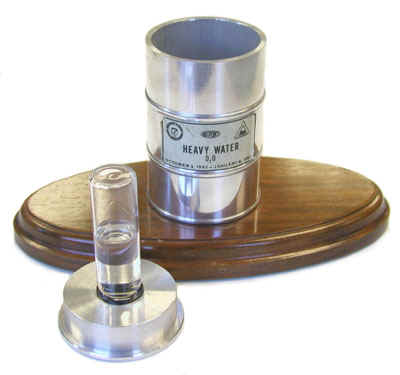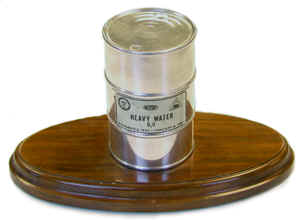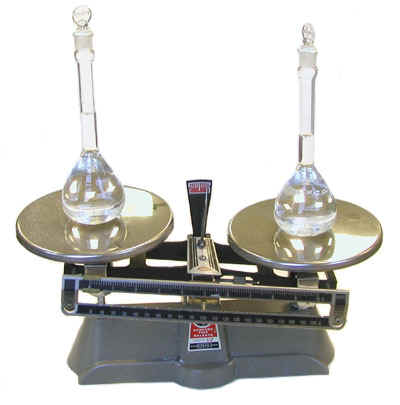Heavy Water


Heavy water is the same as ordinary water except that the two hydrogen atoms (H-1) of the water molecule are replaced by two deuterium atoms (H-2). As such, heavy water is sometimes symbolized D2O instead of H2O. Because it has two extra neutrons, heavy water is approximately 10% heavier than ordinary water.
The memento in the above photographs commemorates the heavy water production operations at the Savannah River plant in South Carolina. The label on the drum reads "Heavy Water, D2O, October 3, 1952 to January 8, 1982." There are also three logos on the label, but I only recognize two: the Department of Energy logo and the Dupont Chemicals logo. Its size is approximately 8" x 4" x 4 ½." Kindly donated by Allen Coggins.

Heavy water is sometimes used as a moderator in nuclear reactors. The job of a moderator is to slow neutrons down to the lower energies that are more likely to initiate fission of the uranium-235 fuel. Heavy water is not quite as good at this as ordinary light water, but it is far less likely than the latter to absorb neutrons. A reactor that uses ordinary water as the moderator must compensate for this absorption of neutrons by increasing (enriching) the percent of the uranium fuel that is uranium-235. Reactors using heavy water don't have to do this, they can function using natural uranium.
Guess which of the two flasks in the photograph to the right contains the heavy water.
Read a story about heavy water ("A Cup of Tea").
References
Tony Gouge, personal communication.
